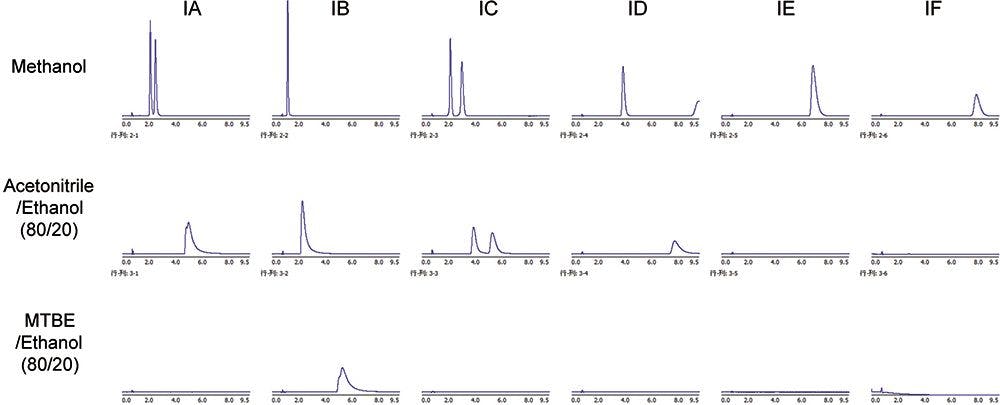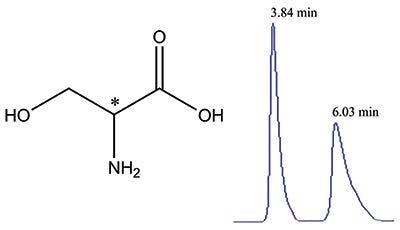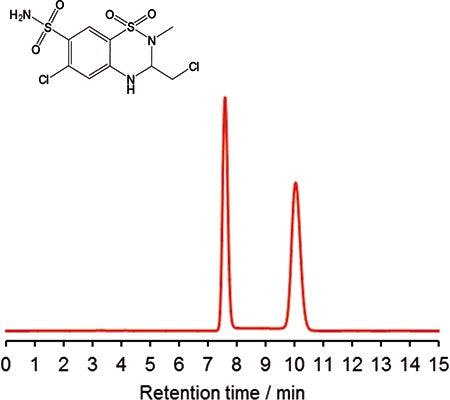Glyphosate Analysis in Soy Beans, Corn, and Sunflower Seeds by HPLC with Post-Column Derivatization and Fluorescence Detection
The Application Notebook
Glyphosate is a broad-spectrum herbicide widely used around the world. Monitoring of glyphosate in crops and water is mandated in many countries. We describe a sensitive and robust HPLC method for analysis of glyphosate in soy beans, corn, and sunflower seeds. This method utilizes a simplified sample preparation procedure that has proven to be effective even for challenging matrices.
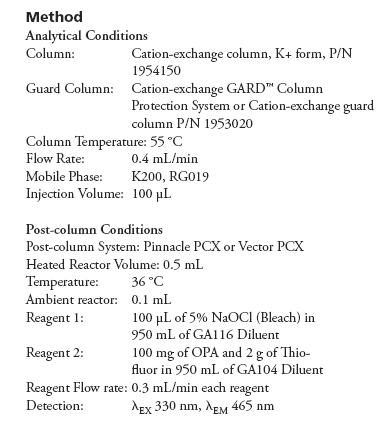
Supplies for Sample Preparation
Methylene chloride, HPLC grade

Table I: HPLC gradient
Acidic modifier solution (16 g KH2PO4, 160 mL of water, 40 mL of methanol, 13.4 mL of conc. HCl)

Table II: Recoveries for glyphosate
Elution solution (160 mL of water, 40 mL of methanol, 2.7 mL of HCl)
RESTOREâ¢
SPE sample clean-up cartridges P/N 1705-0001
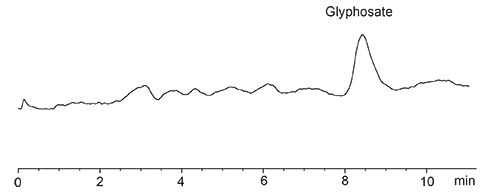
Figure 1: Chromatogram of soy beans sample spiked with glyphosate at 0.1 ppb level.
Sample Preparation
Extraction
To 25 g of homogenized sample, add enough water (after estimating moisture content) such that the total volume of water is 125 mL. Blend at high speed for 3â5 min and centrifuge for 10 min. Transfer 20 mL of the aqueous extract into a centrifuge tube and add 15 mL of methylene chloride. Shake for 2â3 min and centrifuge for 10 min. Transfer 4.5 mL of aqueous layer to another centrifuge tube and add 0.5 mL of acidic modifier solution. Shake and centrifuge for 10 min. Filter through a 0.45 µm filter.
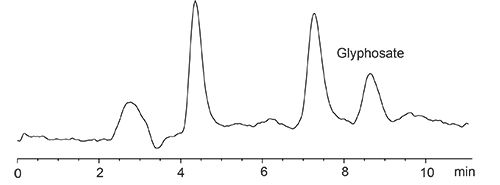
Figure 2: Chromatogram of corn sample spiked with glyphosate at 0.1 ppb level.
Matrix-Specific Modifications
Matrix with high 1) Water; 2) Protein; 3) Fat Content:
1) For samples that absorb large amounts of water, reduce test portion to 12.5 g while keeping water volume the same.
2) For samples with high protein content, add 100 µL of concentrated HCl to 20 mL of crude extract. Shake and centrifuge for 10 min.
3) For samples with high fat content, do the methylene chloride partitioning twice.

Figure 3: Chromatogram of sunflower seeds sample spiked with glyphosate at 0.1 ppb level.
SPE Cleanup
Remove the top cap first, then the bottom cap of the SPE columns and place them into the manifold. Drain the solution to the top of the resin bed. Transfer 1 mL of extract into the column and elute to the top of the resin bed. Add 0.7 mL of the elution solution and discard the effluent. Repeat with a second 0.7 mL portion of the elution solution and discard the effluent. Elute glyphosate with 12 mL of the elution solution and collect the effluent in a round bottom flask. Evaporate to dryness at 40 °C using a rotary evaporator. Dissolve the residue in 2.0 mL of a solution of 10% RESTORE⢠in water (use 1.5 mL for dry samples), filter through a 0.45 µm syringe filter and inject onto the HPLC column. Extracts can be stored refrigerated for up to seven days before the evaporation step.

Pickering Laboratories
1280 Space Park Way, Mountain View, CA 94043
tel. (800) 654-3330, (650) 694-6700, fax: (650) 968-0749
Website: www.pickering.com


.png&w=3840&q=75)

.png&w=3840&q=75)



.png&w=3840&q=75)



.png&w=3840&q=75)


